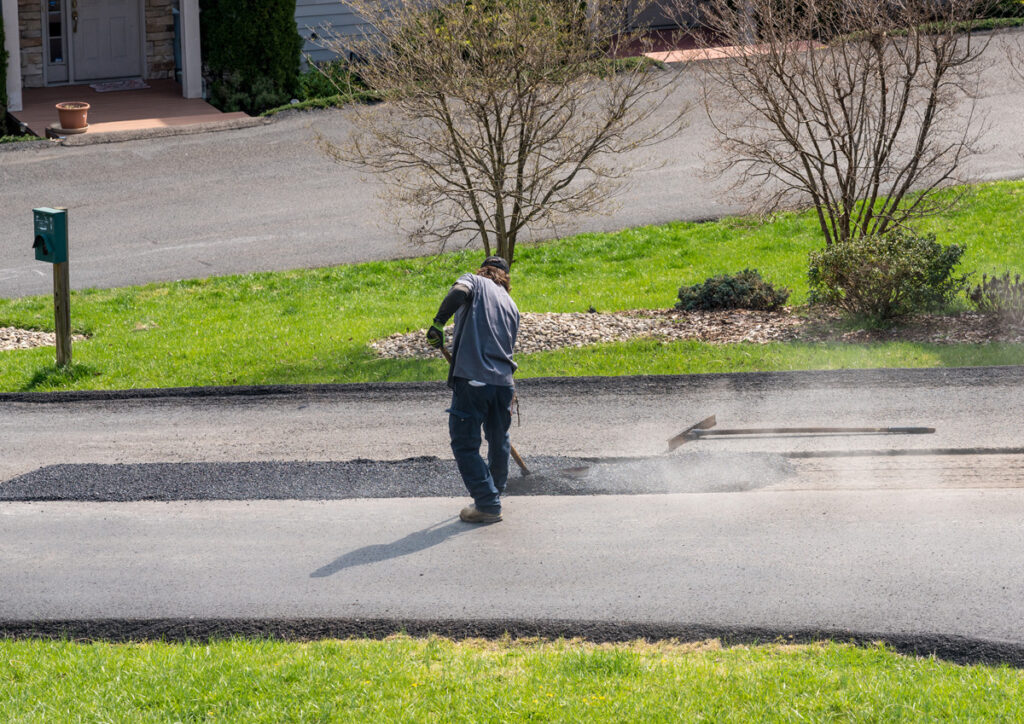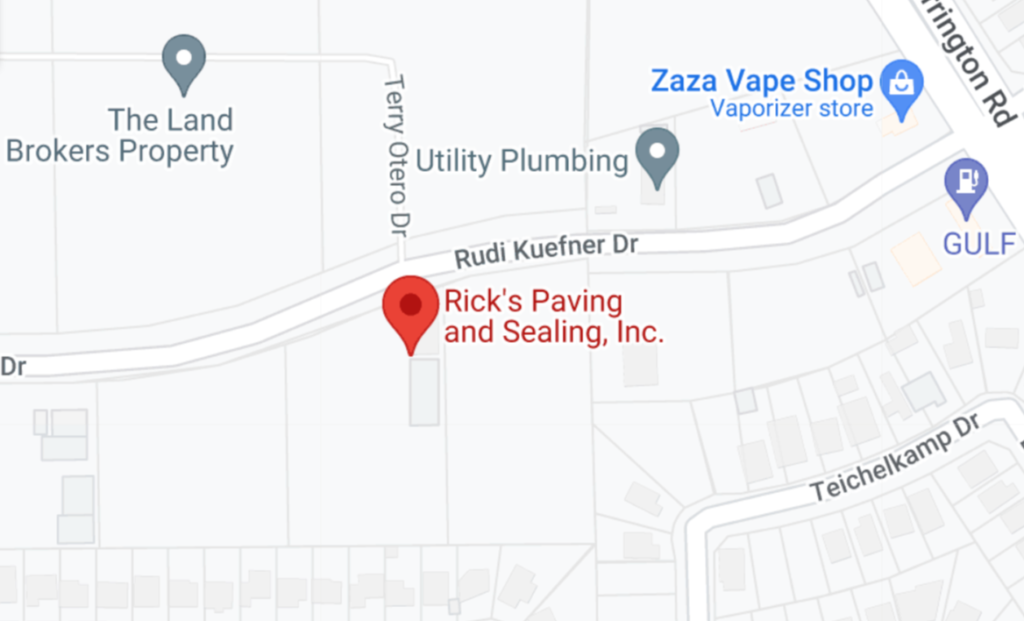Asphalt surfaces, such as driveways, parking lots, and roads, are subjected to constant wear and tear from vehicular traffic, weather, and other environmental factors. As cracks develop, left unaddressed, it can lead to more extensive damage and costly repairs.
Fortunately, our team at Rick’s Paving and Sealing utilizes asphalt crack sealing as a preventive maintenance measure to preserve the integrity and longevity of your asphalt surface. Contact us online or call (915) 204-4378 to learn more.
Why is Asphalt Crack Sealing Important?
When cracks develop, they become an entry point for water, infiltrating underlying layers and weakening the pavement structure. As water seeps into cracks and freezes during cold weather, it can expand, exacerbating the damage and causing further deterioration. Asphalt crack sealing prevents water intrusion promptly, thus preserving the pavement’s structural integrity.
Benefits of Asphalt Crack Sealing
Minimizes Pavement Deterioration
Cracks left untreated can widen over time, leading to more extensive pavement deterioration. As this happens, the cracks create opportunities for debris, oils, and other contaminants to compromise the pavement’s stability and require asphalt repair in El Paso. Asphalt repairs mitigate this process by sealing cracks to prevent them from expanding.
Enhances Safety
Cracks in asphalt surfaces pose safety hazards for pedestrians, cyclists, and motorists. Uneven grounds and potholes can cause accidents, vehicle damage, and trip hazards. By addressing cracks through crack sealing, property owners can create smoother, safer surfaces for all users, reducing the likelihood of accidents and liability concerns.
Reduces Repair Costs
Timely crack sealing is a cost-effective preventive maintenance service that helps property owners avoid asphalt repairs in the long run. When cracks are small and manageable, owners prevent their surfaces from worsening and requiring more extensive repairs or asphalt replacements. Investing in regular asphalt repairs can save significant expenses associated with major repairs or reconstruction projects.
Asphalt Crack Sealing Techniques: What is the Process?
Cleaning and Preparation
The first step in asphalt crack sealing involves cleaning the cracks and preparing the surface for treatment. This typically involves removing debris, vegetation, and loose materials from the cracks using specialized equipment such as wire brushes, compressed air, or high-pressure water jets.
Crack Sealing
Once the cracks are cleaned and prepared, a hot-applied or cold-applied sealant is applied to fill and seal the cracks. Hot-applied sealants, typically asphalt-based, are heated to a liquid state before application and offer superior adhesion and durability. Cold-applied sealants, often polymer-based, are applied at ambient temperatures and are suitable for smaller cracks or in areas where heating equipment is not feasible.
Application
After applying, the sealant is leveled and smoothed using a squeegee or trowel to ensure a uniform seal and proper bonding with the surrounding asphalt surface. This step helps create a seamless, watertight seal that prevents moisture infiltration and protects the pavement from further damage.
Curing and Traffic Control
Once the crack sealing process is complete, the sealant requires sufficient time to cure and bond with the asphalt surface. Depending on the type of sealant used, curing times may vary. Traffic control measures, such as barricades or traffic cones, may prevent vehicles and pedestrians from accessing the freshly sealed areas until the sealant has fully cured.
Asphalt Repair in El Paso
Need asphalt repair services for your commercial property? Call (915) 204-4378 to schedule an appointment today!



